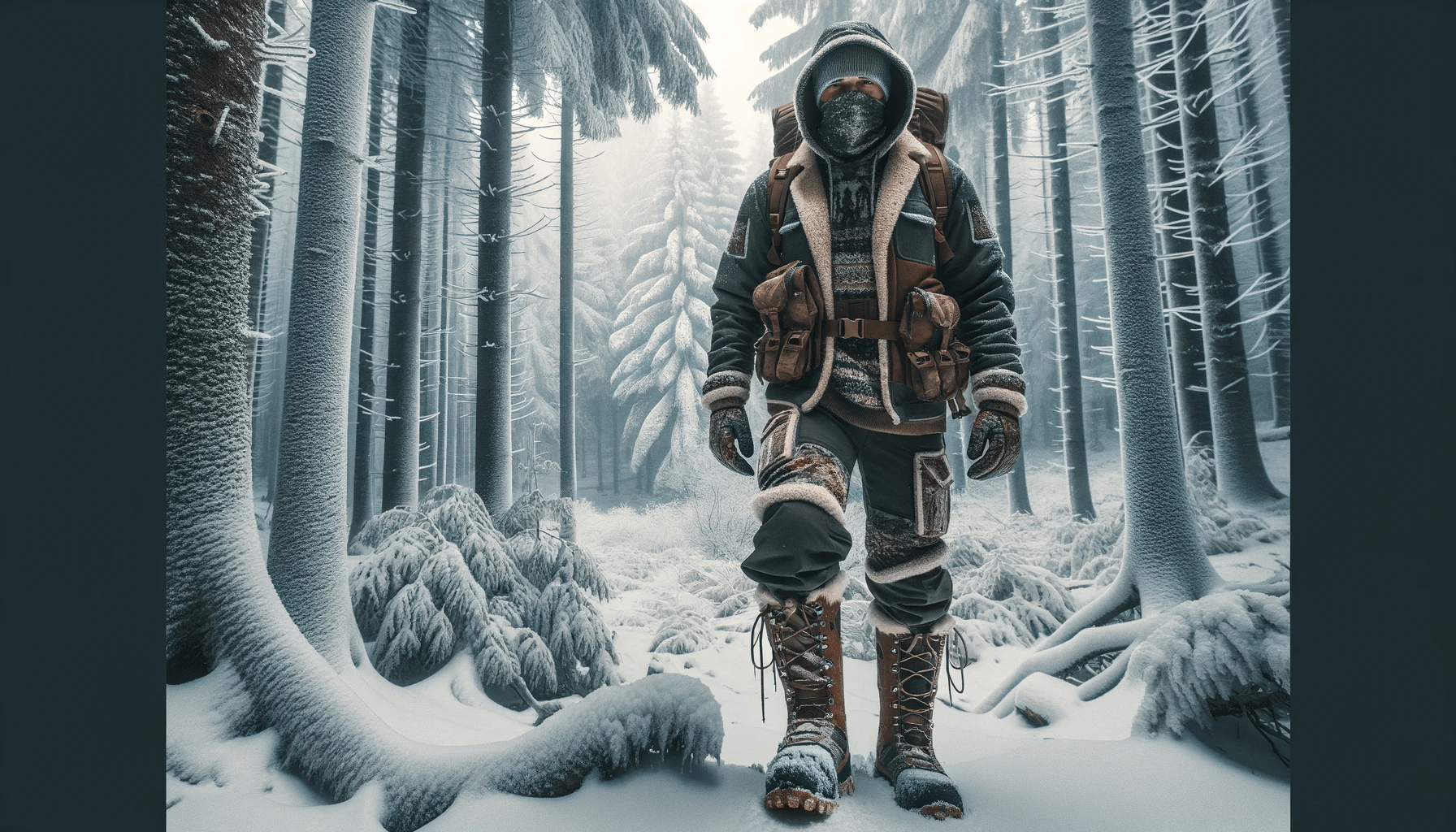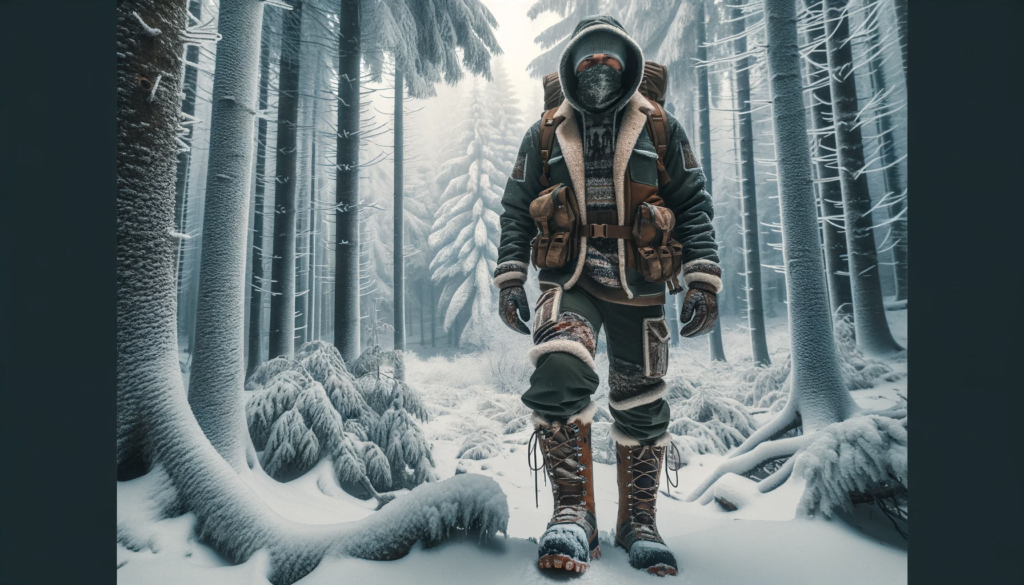Cold Weather Hunting: Gearing Up for Winter Expeditions


Table of Contents
- Introduction: Bracing the Chill for the Thrill of the Hunt
- Chapter 1: Understanding the Winter Hunting Environment
- Chapter 2: Essential Cold Weather Hunting Gear
- Chapter 3: Advanced Hunting Strategies in Winter
- Chapter 3: Advanced Hunting Strategies in Winter (Continued)
- Chapter 4: Safety and Survival Tips
- Chapter 5: Ethical Considerations and Wildlife Conservation
- Conclusion: Embracing the Winter Wilderness
- Frequently Asked Questions
- Q1: What’s the best way to stay warm while hunting in cold weather?
- Q2: How can I maintain my rifle’s performance in cold weather?
- Q3: What are the best types of food to bring on a winter hunting trip?
- Q4: How do I ensure I don’t get lost while hunting in the snow?
- Q5: What wildlife conservation efforts can I support as a hunter?
- Q6: How do I identify animal tracks in the snow?
- Q7: What’s the most effective way to camouflage in a snowy environment?
Table of Contents
Introduction: Bracing the Chill for the Thrill of the Hunt
As winter casts its frosty blanket over the forests and fields, it’s time for hunting enthusiasts to gear up for cold weather hunting expeditions. The crisp air, the silent woods, and the challenge of tracking game in the snow offer an exhilarating experience unlike any other season. In this comprehensive guide, we’ll delve into the essentials of preparing for winter hunting, ensuring you stay warm, safe, and successful in your pursuits.
Why Winter Hunting Is Uniquely Rewarding
- The Serenity of the Season: Winter’s tranquility offers a peaceful hunting environment.
- Tracking Ease: Snow-covered grounds make tracking animals easier.
- Less Competition: Fewer hunters in the field mean more opportunities for you.
Chapter 1: Understanding the Winter Hunting Environment
Before diving into gear and strategies, it’s crucial to understand the winter hunting environment. This includes recognizing the behavioral patterns of game in cold weather and the potential challenges posed by the elements.
Adapting to Animal Behaviors
- Migration and Hibernation Patterns: How game movement changes in winter.
- Feeding Habits: Identifying key feeding areas in the snow.
- Weather Challenges: Dealing with snow, ice, and extreme cold.
- Terrain Navigation: Tips for moving safely through snowy and icy terrain.
Chapter 2: Essential Cold Weather Hunting Gear
Equipping yourself with the right gear is vital for a successful and comfortable winter hunting experience. From clothing to equipment, every piece plays a role in your safety and effectiveness.
Layering for Warmth
- Base Layers: Importance of moisture-wicking materials.
- Insulation Layers: Balancing warmth and mobility.
- Outer Layers: Waterproof and windproof options.
Footwear and Hand Protection
- Boots: Insulated, waterproof choices for different terrains.
- Gloves: Balancing dexterity and warmth.
Technical Equipment
- Firearms and Bows: Considerations for cold weather performance.
- Optics: Fog-proof and cold-resistant binoculars and scopes.
Chapter 3: Advanced Hunting Strategies in Winter
Winter hunting requires different strategies compared to other seasons. Understanding animal tracks, using the snow to your advantage, and knowing when to strike are key.
Tracking Techniques
- Reading Animal Tracks in Snow: Identifying fresh vs. old tracks.
- Movement Patterns: Predicting animal behavior based on tracks.
Chapter 3: Advanced Hunting Strategies in Winter (Continued)
Camouflage and Concealment
- Using Snow to Your Advantage: Techniques for blending in.
- Positioning: Finding the perfect spot for an ambush.
Patience and Timing
- The Waiting Game: How patience pays off in cold weather hunting.
- Optimal Hunting Times: Understanding the best times to hunt in winter.
Chapter 4: Safety and Survival Tips
Safety should never be compromised, especially in the challenging conditions of winter hunting. We’ll cover essential safety and survival tips to keep you secure out in the wilderness.
Hypothermia Prevention
- Recognizing Symptoms: Early signs of hypothermia.
- Emergency Measures: Immediate actions to take if symptoms arise.
Emergency Kit Essentials
- Survival Gear: What to include in your winter hunting survival kit.
- First Aid: Basic first aid knowledge and supplies.
Chapter 5: Ethical Considerations and Wildlife Conservation
As hunters, it’s our duty to respect the wildlife and the environment. This section emphasizes ethical hunting practices and the importance of conservation during the winter season.
Responsible Hunting
- Following Regulations: Adhering to local hunting laws and seasons.
- Fair Chase Principles: Ensuring a respectful and ethical hunt.
Conservation Efforts
- Impact on Wildlife: Understanding the ecological role of hunting.
- Supporting Conservation Initiatives: How hunters can contribute to wildlife preservation.
Conclusion: Embracing the Winter Wilderness
Winter hunting is not just a sport; it’s an adventure that connects you with nature in its most pristine form. With the right preparation, gear, and mindset, you can transform this challenging endeavor into an unforgettable experience. So gear up, step into the tranquility of the winter woods, and embark on a hunting journey that’s as rewarding as it is exhilarating.
Frequently Asked Questions
Q1: What’s the best way to stay warm while hunting in cold weather?
A1: Layering is key. Start with moisture-wicking base layers, add insulating mid-layers, and finish with a waterproof and windproof outer layer. Focus on protecting extremities with quality gloves and insulated boots. Hand and foot warmers can provide extra warmth.
Q2: How can I maintain my rifle’s performance in cold weather?
A2: Cold weather can affect a firearm’s performance. Use a lighter oil for lubrication, as standard oils can thicken in the cold. Keep your firearm dry to prevent freezing. Also, practice shooting with gloves on to ensure comfort and accuracy during the hunt.
Q3: What are the best types of food to bring on a winter hunting trip?
A3: High-energy, non-perishable foods are ideal. Energy bars, nuts, dried fruits, and jerky provide quick energy and are easy to carry. Bring a thermos with a hot drink or soup to help maintain body heat.
Q4: How do I ensure I don’t get lost while hunting in the snow?
A4: Always carry a GPS device and a physical map of the area. Inform someone of your hunting plan and expected return time. Stay aware of your surroundings and landmarks. Consider using brightly colored tape to mark your route in densely wooded areas.
Q5: What wildlife conservation efforts can I support as a hunter?
A5: You can support conservation by following ethical hunting practices, adhering to bag limits, and participating in habitat restoration projects. Joining conservation organizations and contributing to wildlife research can also make a significant impact.
Q6: How do I identify animal tracks in the snow?
A6: Study different animal tracks and their patterns. Pay attention to the size, shape, and stride of the tracks. Fresh tracks will have sharp edges, while older tracks appear more rounded due to melting. Understanding the behavior of the animal can also help in identification.
Q7: What’s the most effective way to camouflage in a snowy environment?
A7: Use white or snow-patterned camouflage clothing to blend with the snowy background. Break up your silhouette with gear that matches the texture of the environment. Remain still as movement is more noticeable against the static winter backdrop.
These FAQs provide additional insights and practical tips for winter hunting enthusiasts. For more detailed information, don’t hesitate to dive into specific chapters of our comprehensive guide or contact us for personalized advice. Stay safe and enjoy your winter hunting adventures!







